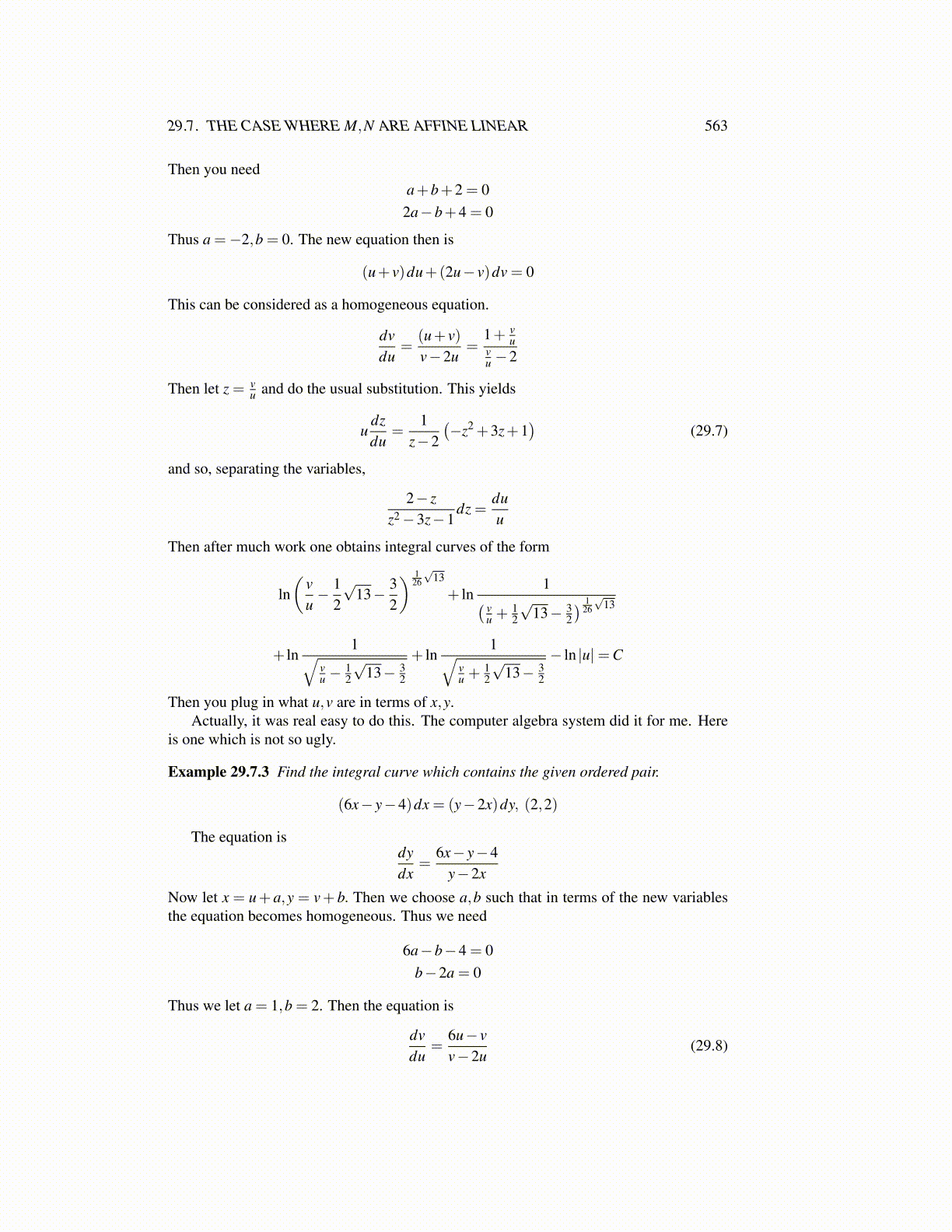
29.7. THE CASE WHERE M,N ARE AFFINE LINEAR 563
Then you needa+b+2 = 0
2a−b+4 = 0
Thus a =−2,b = 0. The new equation then is
(u+ v)du+(2u− v)dv = 0
This can be considered as a homogeneous equation.
dvdu
=(u+ v)v−2u
=1+ v
uvu −2
Then let z = vu and do the usual substitution. This yields
udzdu
=1
z−2(−z2 +3z+1
)(29.7)
and so, separating the variables,
2− zz2−3z−1
dz =duu
Then after much work one obtains integral curves of the form
ln(
vu− 1
2
√13− 3
2
) 126√
13
+ ln1( v
u +12
√13− 3
2
) 126√
13
+ ln1√
vu −
12
√13− 3
2
+ ln1√
vu +
12
√13− 3
2
− ln |u|=C
Then you plug in what u,v are in terms of x,y.Actually, it was real easy to do this. The computer algebra system did it for me. Here
is one which is not so ugly.
Example 29.7.3 Find the integral curve which contains the given ordered pair.
(6x− y−4)dx = (y−2x)dy, (2,2)
The equation isdydx
=6x− y−4
y−2x
Now let x = u+ a,y = v+ b. Then we choose a,b such that in terms of the new variablesthe equation becomes homogeneous. Thus we need
6a−b−4 = 0b−2a = 0
Thus we let a = 1,b = 2. Then the equation is
dvdu
=6u− vv−2u
(29.8)